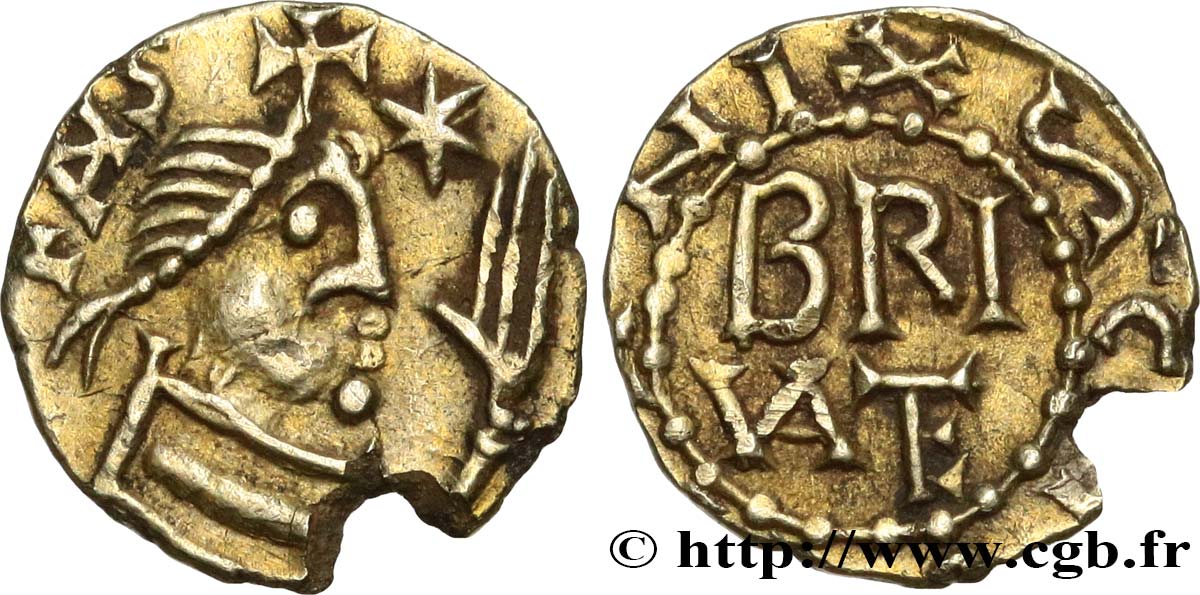bmv_554979 - BRIOUDE - BRIVATE (HAUTE-LOIRE) Triens à la main bénissante, FAVSTINIVS monétaire
Not available.
Item sold on our e-shop (2020)
Price : 2 500.00 €
Item sold on our e-shop (2020)
Price : 2 500.00 €
Type : Triens à la main bénissante, FAVSTINIVS monétaire
Date: c. 720-730
Mint name / Town : Brioude
Metal : gold
Diameter : 13 mm
Orientation dies : 3 h.
Weight : 1,24 g.
Rarity : R3
Coments on the condition:
Ce triens est frappé sur un flan large et irrégulier présentant un arrachement de métal. Reliefs nets
Catalogue references :
Obverse
Obverse legend : FAVS.
Obverse description : Buste avec la main bénissante à droite ; une étoile devant le front et la légende derrière la tête.
Reverse
Reverse legend : X SC[I IVXLIA]NI.
Reverse description : BRI / VATE en deux lignes, dans un cercle perlé.
Commentary
Ce très rare triens correspond à la monnaie 1013 du Belfort, avec FAVS (les lettres A et V ligaturées) et la légende X SCI IVXLIANI au revers. La légende du revers semble variée quelque peu sur notre exemplaire, dans le X et avec les lettre ANI de la fin hors flan. Selon le Belfort, le style de ce triens est absolument contemporain de Sigebert (535-575), du Gévaudan.








 Report a mistake
Report a mistake Print the page
Print the page Share my selection
Share my selection Ask a question
Ask a question Consign / sell
Consign / sell